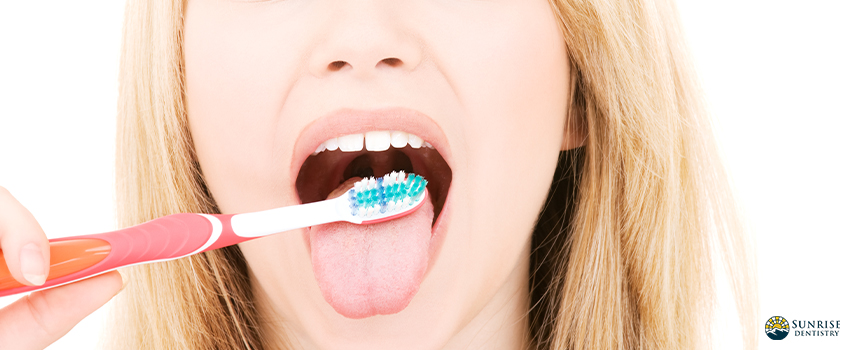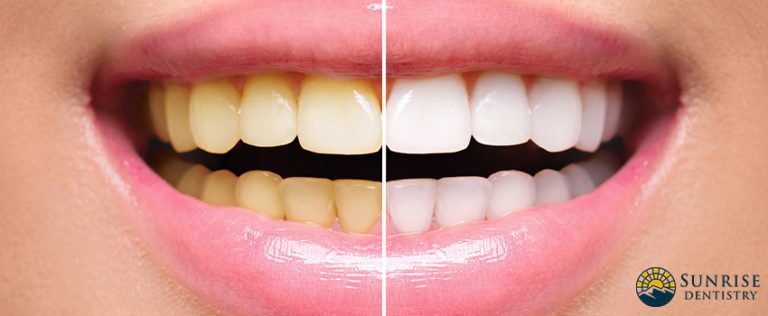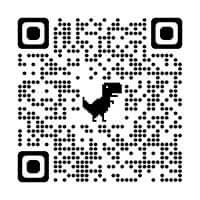The tongue is an important part of the digestive system. It helps the teeth during mastication (chewing), making sure that everything is ready to pass through the esophagus. However, not everyone is aware that the tongue is susceptible to bacterial infection like the rest of the mouth. There are cases where people do not include the tongue when brushing. Learn how to clean tongue and why brushing it with a tongue brush is necessary.
Should You Brush Your Tongue?
Are you supposed to brush your tongue? It’s a resounding “yes!” Brushing the tongue is necessary to have a clean tongue and prevent the bacteria from causing complications. The human tongue is covered with papilla (hair-like bumps where the taste buds are located) that helps process the taste of the food. In the early days of human evolution, the taste was important to identify which food contained toxic materials. While this evolutionary adaptation is still present, nowadays, the tongue is primarily used to stimulate the body for eating.
When eating, it is normal to have residue on the teeth and the lower areas of the tongue. While this can be resolved by drinking water, there will be particles that will be stuck in the crevices of the teeth and some parts of the tongue. In discussing how to clean the tongue, dentists suggest light brushing along the tongue. Although this can be done using a toothbrush, the bristles of some toothbrushes are too stiff, which can either irritate or wound the upper layer of the tongue.
Tongue brushes and scrapers are developed specifically for the purpose to clean the tongue. These tools have become more popular over the years and are readily available in drug stores and supermarkets. Tongue brushes and scrapers help minimize the bacteria population living in the mouth, similar to brushing does. Cleaning the tongue with a scraper lessens the chances of experiencing bad breath as well.
Tongue brushes and scrapers look like regular toothbrushes with tiny bumps instead of bristles. These bumps are relatively soft to prevent irritating the tiny papillae. Regular tongue brushing can prevent common tongue ailments and other dental infections.
Advantages of Using a Tongue Brush/Scraper
Should you brush your tongue?
While most dental professionals would still say that a toothbrush can work on how to clean the tongue naturally, some dental manufacturers that developed tongue brushes and scrapers. As mentioned, tongue brushes are specifically designed to clean the entire muscle without hurting the sensitive papillae.
Here are other perks on learning how to clean tongue and using a tongue brush/scraper after brushing your teeth.
1. Decreases Bacteria Population
The microbiome inside the mouth is always active, and bacteria constantly stick to the tongue. These bacteria eat the remains of any food particle that sticks on the tongue. Using a tongue scraper and learning how to clean the tongue remove the bacteria colony and maintain their population to prevent them from causing trouble for the teeth.
2. Avoid Bad Breath
Should you brush your tongue? Yes, you should because it inhibits bad breath.
Bacterial activity is the cause of bad breath. When the mouth becomes dry due to the lack of saliva production, the environment becomes suitable for bacteria to multiply. Prevent bad breath from happening by spending a couple of minutes cleaning the tongue after brushing the teeth.
An unhealthy tongue encourages bacteria build-up, leading to halitosis or extreme bad breath.
Common Tongue Ailments
The mouth contains millions of bacteria that help limit tooth decay. even with a clean tongue. Bacteria in the mouth are the ones that eat food residue. However, in turn, these bacteria produce waste products that are highly acidic and can melt the teeth’s protective layer.
Tongue ailments can make a person lose his/her sense of taste and other tongue-related diseases. Oral bacteria, coupled with poor hygiene, cause complications to an unhealthy tongue. Here are the common tongue ailments that can occur when poor tongue hygiene is exercised.
1. Burning Mouth Syndrome
Should you brush your tongue? You should to avoid Burning Mouth Syndrome (BMS). Brushing your tongue can help.
A burning sensation characterizes BMS, often felt anywhere in the mouth. There are no known causes of BMS, but medical professionals agree that the occurrence of BMS is a symptom of other dental diseases. BMS is commonly mild. However, there are instances where it can be severe and cause painful episodes.
There are two types of BMS: primary and secondary burning mouth syndrome. Primary BMS has no known symptoms. On the other hand, secondary BMS has identifiable causes such as hormonal changes, dry mouth, medication side effects, allergies, vitamin deficiency, and mouth infection. Although old, a 2012 study found out that BMS is more commonly observed in women in their menopausal age.
A dry mouth and an unhealthy tongue can contribute to burning mouth syndrome. A person who does not observe correct dental hygiene and the right methods how to clean tongue is prone to BMS because of bacterial infections that may transpire.
2. Glossitis
Various causes can make the tongue swell. Glossitis – the technical term for the inflammation of the tongue – commonly occurs when a person suffers bacterial, yeast, or viral infections. Oral injuries can also be the root of tongue swelling. People with piercings and ill-fitting dentures often experience tongue swelling as well.
In some cases, glossitis is caused by allergic reactions, especially if a person ate food with ingredients that may trigger an allergy.
Symptoms of Existing Tongue Problems
How will you know if you are having tongue problems? The human body gives enough warnings when there is something wrong with any part of it, and the mouth is no different. There are a variety of symptoms that occur to give you a signal that there is something wrong with your tongue. Here are some of them.
1. Loss Of Taste
Loss of taste is probably the first and most important sign that you are having trouble with your oral health in general. Ageusia, or the loss of taste, can reflect a respiratory ailment like a common cold or flu. However, it can also pertain to an infection in the mouth (especially when pain is also felt) or a deficiency in certain nutrients.
Some people under medication also experience ageusia during the first few months.
2. Swelling
Tongue swelling is either the symptom or the cause of the problem itself. Swelling commonly occurs when an infection is apparent. To gauge whether your tongue is swelling, observe if you have difficulties eating and swallowing. Dire cases of tongue swelling also make it difficult to speak.
Aside from these tell-tale signs, the general color of the tongue will also change to either a pale pink or red when inflamed.
3. Inability to Move the Tongue
Tongue paralysis and the general inability to move the tongue are often rooted in nerve damage. The inability to move the tongue is especially dangerous when eating and chewing food. Furthermore, when a person cannot move his/her tongue, he/she often encounters problems with speaking or pronouncing certain words.
While tongue paralysis can be corrected by therapy, it is best to see your doctor immediately, especially when the problem occurs suddenly.
4. Color Patches
Sometimes the tongue will exhibit some discoloration. Although a person’s diet can cause this, discoloration and color patches are often a sign of trouble. When seeing color patches around the tongue, it is important to seek a dentist immediately.
The normal color of the human tongue is pink with a whitish coating on the surface. When you notice that your tongue becomes the color of striking red, it may signal nutrient deficiency issues, such as the lack of vitamin B. If you suffer from scarlet fever or Kawasaki disease, it may also turn your tongue red.
In heart problems where oxygen cannot flow correctly to the whole body, the tongue may exhibit a somewhat purplish color. Poor oxygen circulation from pulmonary diseases can also be the reason behind a blue tinge in the tongue. Immediate medical attention is needed once the tongue exhibits these colors.
A yellow tinge in the tongue may be a sign of jaundice. This yellowing occurs when the yellow-colored pigment called bilirubin reaches a high production level.
When the tongue (especially a toddler’s tongue) becomes a suitable place for a yeast colony, it becomes susceptible to white spots scattered throughout the tongue and in the inner cheek. White patches on the tongue may be due to fungal infections like oral thrush. Consult a dentist immediately to get rid of white tongue. You’ll know you have oral thrush when you notice small whitish bumps appear on the tonsils, gums, and all over the tongue.
A black tongue, or something known as hairy black tongue is usually caused by poor oral hygiene, and is commonly the result of a buildup of dead skin cells on the papillae of the tongue. A tongue brush would be helpful in clearing up hairy black tongue.
How To Clean Your Tongue
The tongue is an important part of the mouth and the digestive system. The next time you brush your teeth, take a minute or two to clean your tongue.
Tongue brushes are a helpful tool in maintaining the cleanliness of and scraping off the harmful bacteria that may colonize the tongue. Grab your tongue brush or scraper and follow these steps on how to clean tongue properly.
1. Stick out the tongue.
How to properly clean your tongue?
Make sure to relax your tongue while scraping/brushing it off. To reach all the tongue areas, stick it out and let it stretch. This method of how to brush your tongue also helps the tongue scraper clean the tongue efficiently.
2. Place the tongue scraper at the back of the tongue.
The proper direction of your tongue brush/scraper should be from the most inner part near the tonsils until the tip. This prepares your tongue for the correct method on how to scrape your tongue.
3. Press the scraper from the back to the front.
Carefully move the brush or the scraper from the back end of the tongue. Be careful not to rush the scraper because it may irritate the papillae in the tongue. Rinse and repeat.
Sunrise Dentistry Helps With Bacterial Infection and Tongue-Related Problems
Looking for dentists in Durango, CO? Sunrise Dentistry helps resolve oral problems from tooth decay to halitosis. SD and its team of highly-skilled professionals give the best treatment for your teeth, including the best way to clean tongue. Call us now and book a session for holistic oral care.





